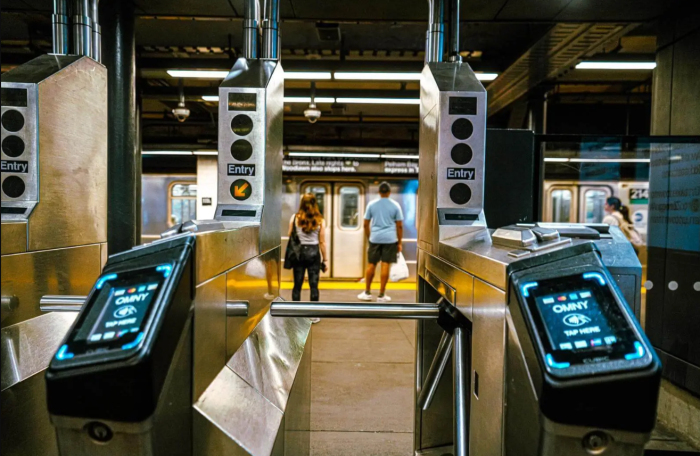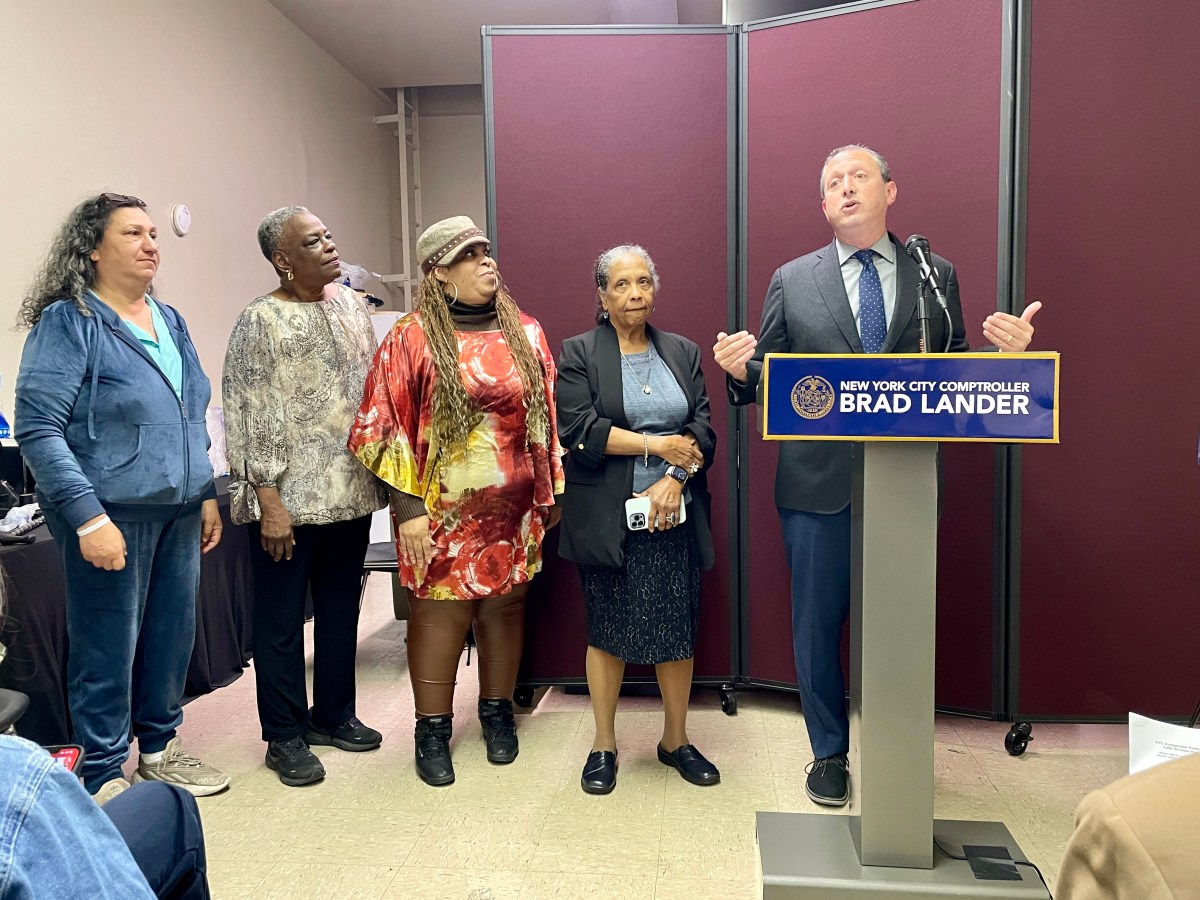
The city wants to give Fifth Avenue’s bike lane a safety makeover.
A representative from the city Department of Transportation revealed plans on Thursday to convert Fifth Avenue’s bike lane into a parking-protected lane — not unlike what’s already in place along Second Avenue.
“Like all the other protected bike lanes we’ve seen in this district, it would reduce pedestrian crossing distance, it would improve safety for cyclists by reducing cycling exposed to vehicular traffic and . . . it would do a lot to improve pedestrian safety,” said Nick Carey, a senior project manager at the city’s DOT, who pitched the proposal to a largely supportive audience at the Transportation Committee meeting of Manhattan’s Community Board 2.
The project focuses exclusively on the existing lane and essentially switches the bike lane with curbside street parking.
Originally installed in 1978 — “old-school” bike infrastructure from the Kotch-era, as Carey put it — the lane runs from 23rd Street to Eighth Street. The DOT’s plan to revamp it is split in three phases based on street width to accommodate traffic as the avenue narrows heading south.
The DOT could lay out the upgrade while maintaining the same traffic volume and without eliminating any vehicular lanes — though the project does require the removal of 38 parking spaces.
Between 23rd and Ninth Streets, the protected bike lane would be painted green and tucked between the curb and a vehicular parking lane. But the avenue is too narrow for the same configuration for the final leg from Ninth Street to Eighth Street. The city would have to eliminate parking on the left side of the street completely to make way for a green-painted lane protected by plastic bollards.
Most residents in attendance from a transit-rich area of Manhattan shrugged off the parking loss and questioned why the DOT wouldn’t continue the lane further south, down to Washington Square Park. Carey said Fifth Avenue narrows even more as it continues to the park and that the city would have to take away an additional 14 parking spaces to do so — usually a politically challenging feat.
The city DOT will present the same project to Manhattan’s Community Board 5 later in the month.


































